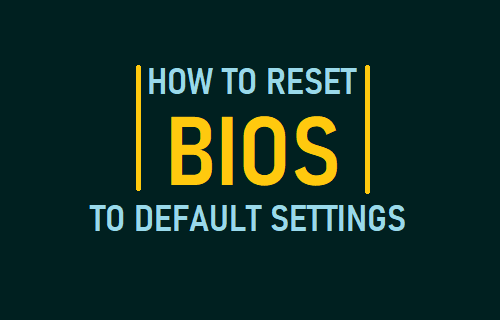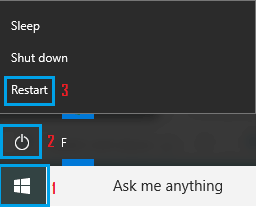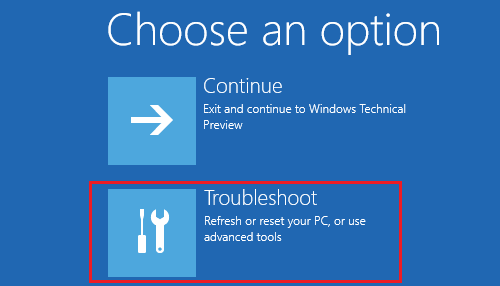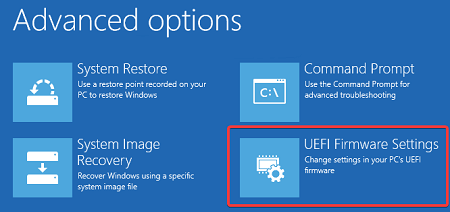Similar to any other software, the BIOS/UEFI on a Windows computer can get corrupted due to malware, stuck updates and other reasons. Hence, it is important to know the steps to reset BIOS or UEFI on your computer.

Reset BIOS/UEFI to Default Settings
Irrespective of the operating system (Windows or macOS, Linux), the motherboard of all computers comes with a built-in firmware known as BIOS, which stands for Basic Input Output System.
The purpose of BIOS is to perform Hardware initialization during the boot up process and provides run time services for the operating systems and programs installed on the computer.
On newer computers, BIOS has been replaced with UEFI (Unified Extensible Firmware Interface). Both BIOS and UEFI basically perform the same functions and the terms BIOS and UEFI are used interchangeably.
Compared to BIOS, the UEFI on newer computer has more security features and is rated to be faster than BIOS.
How to Enter BIOS Settings?
In general, BIOS can be accessed by pressing the power button to start the computer and repeatedly pressing a dedicated function key, as the computer is booting up.
The designated function key to enter BIOS can vary, depending on the manufacturer and the model of the computer.
In addition to using the Function key, there are various other methods to enter BIOS or UEFI on a Windows Computer.
How to Reset BIOS to Default Settings?
If the BIOS or UEFI Firmware on your computer has become corrupted, you can follow the steps below to Reset BIOS to Factory Default Settings.
1. Press and Hold the Shift key on the keyboard of your computer and click on Restart.

2. On the next screen, select the Troubleshoot option.

3. From Troubleshoot screen, navigate to Advanced options and select UEFI Firmware Settings option.

4. On the next screen, select the Restart option to enter BIOS settings on your computer.
5. On BIOS Settings screen, click on Restore Settings button to Reset BIOS on your computer.
If you do not see Restore Settings button, press the F9 key to bring up Load Default Options prompt and click on Yes to Restore BIOS to default settings.
6. Make sure you click on the Save option, before clicking on Exit to close the BIOS Settings screen
Note: Your computer may have its own menu option to Reset BIOS.